Comments / Questions (107)
![]() Marit wrote:
Marit wrote:
Hur ökar man flera maskor i slutet av varvet? Avigt? Rät? Ska man bara sticka flera ggr i samma maska? Det blir tokigt när man ska öka 5 m sista v. Jag har letat efter tutorials men hittar ingen som stämmer med mönstret.
10.01.2024 - 20:14DROPS Design answered:
Hei Marit. Det skal ikke økes, men legges opp nye masker. Nederst finner du en video: Lägg upp nya m i kanten på arb. Ta en titt på den og bruk den teknikken du syns best om. Bruk samme teknikk både på retten og på vrangen. mvh DROPS Design
15.01.2024 - 13:55
![]() Petra wrote:
Petra wrote:
Hallo, Ich muss trotzdem nochmal fragen: "A" wird an "B"genäht? Wird das dann nicht sehr hoch? Es sind doch nur Pantoffeln... Beste Grüße
13.11.2023 - 16:12
![]() Petra wrote:
Petra wrote:
Hallo, Sie schreiben: "Aus der oberen Öffnung ca. 55 bis 60 Maschen mit rot auffassen" . D.h. die Randmaschen von 'A' und 'B' werden nicht mit aufgenommen? Und was bedeutet: "am äußeren Maschenglied der äußersten Maschen" ? Besten Dank
12.11.2023 - 20:56DROPS Design answered:
Liebe Petra, A und B sind beim Fersen, deshalb wird man keine Masche hier auffassen, nur an der Öffnung. Damit diese Kante nicht zu dick wird, soll man die Maschen in der äußersten Glied von den Rand-Maschen auffassen. Viel Spaß beim stricken!
13.11.2023 - 08:30
![]() Barbara Schust-Lawrence wrote:
Barbara Schust-Lawrence wrote:
I love the look of these slipper! I have made several slippers from another pattern, but now want to make a slip on style. I am a novice knitter, and the pattern I used was so easy, as there was a chart with directions for every row, for every size. I don’t want to give up on this pattern but I can’t even begin to understand the directions. Has anyone created a chart for these lovely Winter Sprite slippers and could share it?
20.02.2023 - 14:30DROPS Design answered:
Dear Mrs Schust-Lawrence, we don't have any chart for this pattern, but just follow the pattern step by step, and feel free to ask any question here. Happy knitting!
21.02.2023 - 09:49
![]() Jutta Schwan-Mahut wrote:
Jutta Schwan-Mahut wrote:
Hallo, wo finde ich die Anleitung der gefilzten blaue krone? Ist abgebildet wo man näheres über das verfilzen nach lesen kann. Mit freundlichen Grüßen Jutta
05.02.2023 - 02:37DROPS Design answered:
Liebe Frau Schwan-Mahut, wir haben einige Anleitung für Kronen (siehe hier) aber für diese gefiltze haben wir keine. Viel Spaß beim filzen!
08.03.2023 - 13:23
![]() Helene wrote:
Helene wrote:
Jeg har meget smalle fødder og lav vrist, så når jeg strikker i str. 40, skal midten ikke være 24 cm høj, som der står i opskriften, men kun 18 cm. Det svarer til 20 pinde fra sidste udtagning til første indtagning. Og der skal kun samles 50 masker op til kanten rundt om åbningen. Jeg har også lavet et diagram på ternet papir til udtagningerne/indtagningerne - det gør det meget nemmere at holde styr på.
29.01.2023 - 11:46
![]() Helene wrote:
Helene wrote:
Hej - Jeg har strikket hjemmeskoene i str. 40, men de blev alt for brede/høje. Nu har jeg strakt dem ud til en str. 44 i stedet, men kan det være rigtigt, at arbejdet skal være 24 cm på midten i str. 40? (Skitsen ser heller ikke så “høj” ud …) Et andet spørgsmål: Når man syr vristen og tåen sammen, skal man så bare sy sømmen fladt hele vejen frem til tåen? Jeg lagde tåen sammen og syede den på tværs … jeg ved ikke, om det var en fejl?
07.01.2023 - 20:06
![]() Stella wrote:
Stella wrote:
Hej, det vore oerhört användbart för nybörjare om ni någonstans förklarar grunder, t ex 1. lägga upp 4-4-5-5 vad betyder detta om jag har vanliga stickor eller menar ni att jag ska ha fyra sockstickor? Ska jag lägga upp vissa rätt och vissa aviga eller? 2. Ökning 2 maskor 5-6-6-7 gånger menas här på sockstickor eller? Tack.
30.12.2022 - 12:33DROPS Design answered:
Hei Stella. Tallene 4-4-5-5 forteller deg hvor mange masker du skal legge opp. I denne oppskriften er det 4 størrelse og de 4 tallene forteller deg at første tallet er til den minste størrelsen og det siste tallet er til den største størrelsen. Men ta gjerne en titt her for å forstå en DROPS oppskrift for du begynner å strikke: Hur man följer ett DROPS mönster mvh DROPS Design
05.01.2023 - 12:36
![]() Gunvor wrote:
Gunvor wrote:
Det här är andra mönstret tofflor jag provar av era beskrivningar och båda är värdelösa. Mycket förvirrande och konstiga beskrivningar, och resultatet som inte alls liknar era ritningar. Och jag är ingen nybörjare. Tråkigt att behövs repa upp ullgarn son lätt slits....ska man verkligen behövs provsticka i ett annat garn först? Nä jag ger upp och letar mönster någon annanstans....
02.12.2022 - 11:26
![]() Chiara Eller wrote:
Chiara Eller wrote:
Hallo, Ich war immer sehr zufrieden mit den Anleitungen von Garnstudio. Ich hab mich auch genau an die Anleitung gehalten, dennoch ist ein oben viel zu weiter Schuh bei mir raus gekommen, was super ärgerlich ist. Die neu überarbeiteten Anleitungen sind irgendwie nicht mehr das gleiche 😔 Ich muss jetzt schauen, wie ich meinen Schuh noch tragfähig machen kann, da ich so rausschlüpfe und sie aber von der Fußlänge super passen.
22.01.2022 - 17:46
Winter Sprite#wintersprite |
||||||||||||||||
|
|
||||||||||||||||
Felted slippers in DROPS Snow. Size 35 – 44.
DROPS 104-4 |
||||||||||||||||
|
SLIPPER: The slipper is worked in one with a seam mid front and mid back, beginning at the top of instep (see sketch – D) Cast on 4-4-5-4 stitches on needle size 8 mm with dark grey Snow. Work in stocking stitch. Increase in each side by casting on new stitches at the end of every row as follows: Right side seen from RS (towards heel): 2 stitches 3 times, 3 stitches 2 times, 5-6-7-8 stitches 1 time. Left side seen from RS (towards toe): 2 stitches 5-6-6-7 times, 1 stitch 3 times. After all increases are done there are 34-37-39-41 stitches on needle. Continue in stocking stitch. REMEMBER THE KNITTING TENSION! When piece measures 22-24-24-25 cm, insert a marker in the piece = mid under foot. Now work the other side of slipper with cast offs instead of cast ons. Begin cast off when piece is the same length from marker as from last increase in each side and up to marker - NOTE! Cast offs in right side begin when 2-3-3-4 cast offs have been done in the left side. Cast off at beg of every row as follows: Right side seen from RS (from heel): 5-6-7-8 stitches 1 time, 3 stitches 2 times, 2 stitches 3 times Left side seen from RS (from toe): 1 stitch 3 times, 2 stitches 5-6-6-7 times = 4-4-5-4 stitches remain. Cast off. ASSEMBLY: Fold the slipper mid under foot and sew seam mid on top of foot (including cast on and cast off edge). Pick up approximately 55 to 60 stitches on needle size 8 mm around the opening at the top (it is important to pick up enough stitches to avoid a tight edge). Knit 2 rows. Cast off. Sew seam mid back (A + B) in front loop of outermost stitch. Knit another slipper. FELTING: Place the slippers in the washing machine with a detergent without enzymes and optical bleach. Wash at 40 degrees with normal spin but no pre-wash. Put on the slippers and shape it to the correct size while it is still wet. At subsequent wash, wash the slippers at regular wool programme. AFTER FELTING: If the piece is not felted enough and is too big: Wash the piece one more time in the washing machine while it is still wet add a terry towel that measures approx. 50 x 70 cm - NOTE: Do not use a short program. If the piece has been felted too much and is too small: While the piece is still wet stretch it to the correct measurements, if the piece is dry, make sure to soak it first. Remember: All subsequent washes are as a normal wool garment. |
||||||||||||||||
Diagram explanations |
||||||||||||||||
|
||||||||||||||||
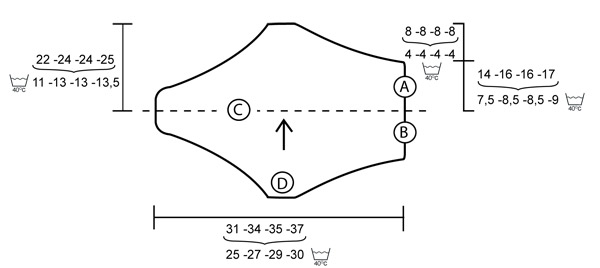
|
||||||||||||||||
Have you finished this pattern?Tag your pictures with #dropspattern #wintersprite or submit them to the #dropsfan gallery. Do you need help with this pattern?You'll find 15 tutorial videos, a Comments/Questions area and more by visiting the pattern on garnstudio.com. © 1982-2025 DROPS Design A/S. We reserve all rights. This document, including all its sub-sections, has copyrights. Read more about what you can do with our patterns at the bottom of each pattern on our site. |
||||||||||||||||












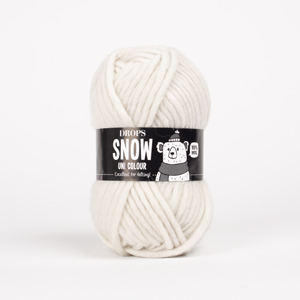
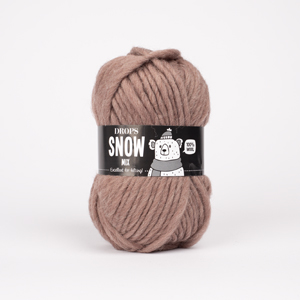






















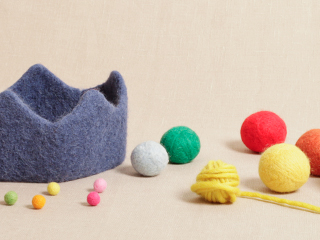











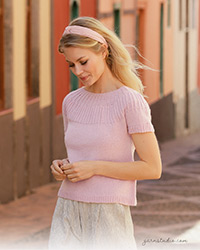
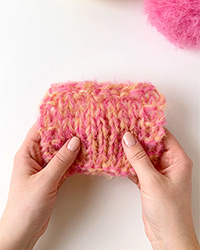
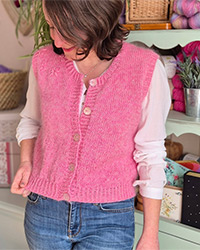
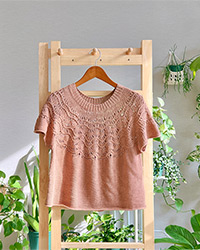
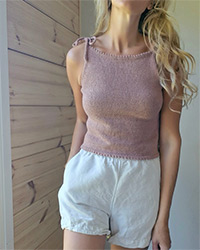

Post a comment to pattern DROPS 104-4
We would love to hear what you have to say about this pattern!
If you want to leave a question, please make sure you select the correct category in the form below, to speed up the answering process. Required fields are marked *.